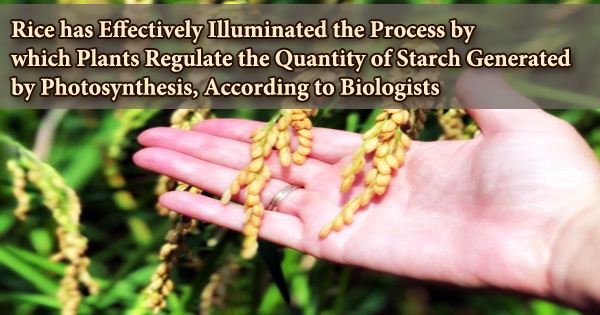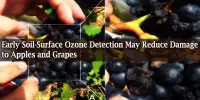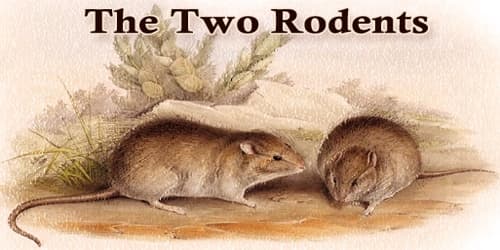Rice has been successfully illuminate by a Kobe University research group lead by Associate Professor FUKAYAMA Hiroshi of the Graduate School of Agricultural Science to uncover the process by which plants regulate the quantity of starch generated through photosynthesis. This information might help improve the quality and production of agricultural crops. On May 14, 2021, the findings of this study were published in the worldwide scientific journal Plant, Cell & Environment.
Main Points:
- Photosynthesis is the process by which plants transform carbon dioxide (CO2) into organic compounds (such as starch). When a plant grows in an environment with a high CO2 concentration, the amount of starch it generates rises.
- When CO2 levels rise, the CRCT (*1) protein levels rise as well. This protein is considered to increase starch production, although the mechanism by which it does so is unclear.
- The researchers discovered that 14-3-3 proteins (*2) have a function in CRCT-mediated starch production control.
- They speculated that after being produced in the phloem’s vascular bundles, CRCT enters and gets activated in the starch-storing parenchyma cells.
- CRCT is a transcriptional activator protein that binds to regulatory sites on numerous starch synthesis-related genes, according to researchers.
- Plants need to synthesize starch to survive. The understanding of the regulatory system that underpins this process will aid in increasing agricultural yield and quality.
Research Background –
The major source of global warming, which is a global concern, is a rise in CO2 concentration in the atmosphere. Plants, on the other hand, turn CO2 into starch through photosynthesis, thus this might be beneficial. When a crop is cultivated in an environment with a high CO2 concentration, starch synthesis is accelerated, resulting in faster growth and higher yield.
The CO2-Responsive CCT protein (CRCT) is activated when CO2 levels are high, but its function has remained unclear. This research group has been studying these proteins in rice plants and has previously revealed that CRCT is a key protein in starch production regulation. The group’s most recent results explain how CRCT regulates this process, which was previously unknown.
Research Methodology and Findings –
Glucose 6-phosphate/phosphate translocator, ADP-glucose pyrophosphorylase, starch synthase, and starch branching enzyme are among the proteins necessary for starch production in plants. The researchers theorized that CRCT controls the expression of several genes encoding proteins involved in starch production. Transcription factors are proteins that control gene expression. These transcription factors frequently form a combination with another protein.
When the researchers looked at how much CRCT is present inside a plant, they discovered that it may form a compound with certain proteins. They used an antibody that specifically attaches to CRCT to further examine this, and they discovered that CRCT interacts to 14-3-3 proteins. The researchers discovered that CRCT and 14-3-3 protein form a complex inside the nucleus through another study, this time utilizing green fluorescent proteins. They further suggested that after being produced in the phloem’s vascular bundles, CRCT may travel into and activate the starch-storing parenchyma cells.
CRCT also stimulates transcription by binding to areas that control the expression of numerous starch synthesis-related genes, according to researchers. It is well known that the amount of starch and the expression of 14-3-3 proteins have a negative relationship.
However, our findings revealed a link between the amount of starch consumed and the expression of CRCT. As a result, scientists believe that 14-3-3 protein and CRCT create an inactive combination.
Further Developments –
Plants require starch synthesis to survive, and the gene CRCT, which controls this process, is a prominent target for attempts to increase crop quality and yield. Furthermore, because CRCT is a gene that is active in the presence of high CO2, this knowledge will be beneficial in the future when selecting optimal rice cultivars for such situations.
Furthermore, CRCT-like genes have been discovered in every plant studied thus far. The study team is also looking at the function of CRCT in potatoes, a common starch crop. From an academic viewpoint, there are still some unanswered questions. CRCT proteins are thought to travel across cells based on current study findings, however, the underlying process is unknown.
Furthermore, it is unknown how CRCT alters its own expression level in response to CO2 and sugar concentrations. It will be feasible to make even more improvements to agricultural crops if the mechanism behind CRCT-mediated control of starch synthesis can be completely understood.
















